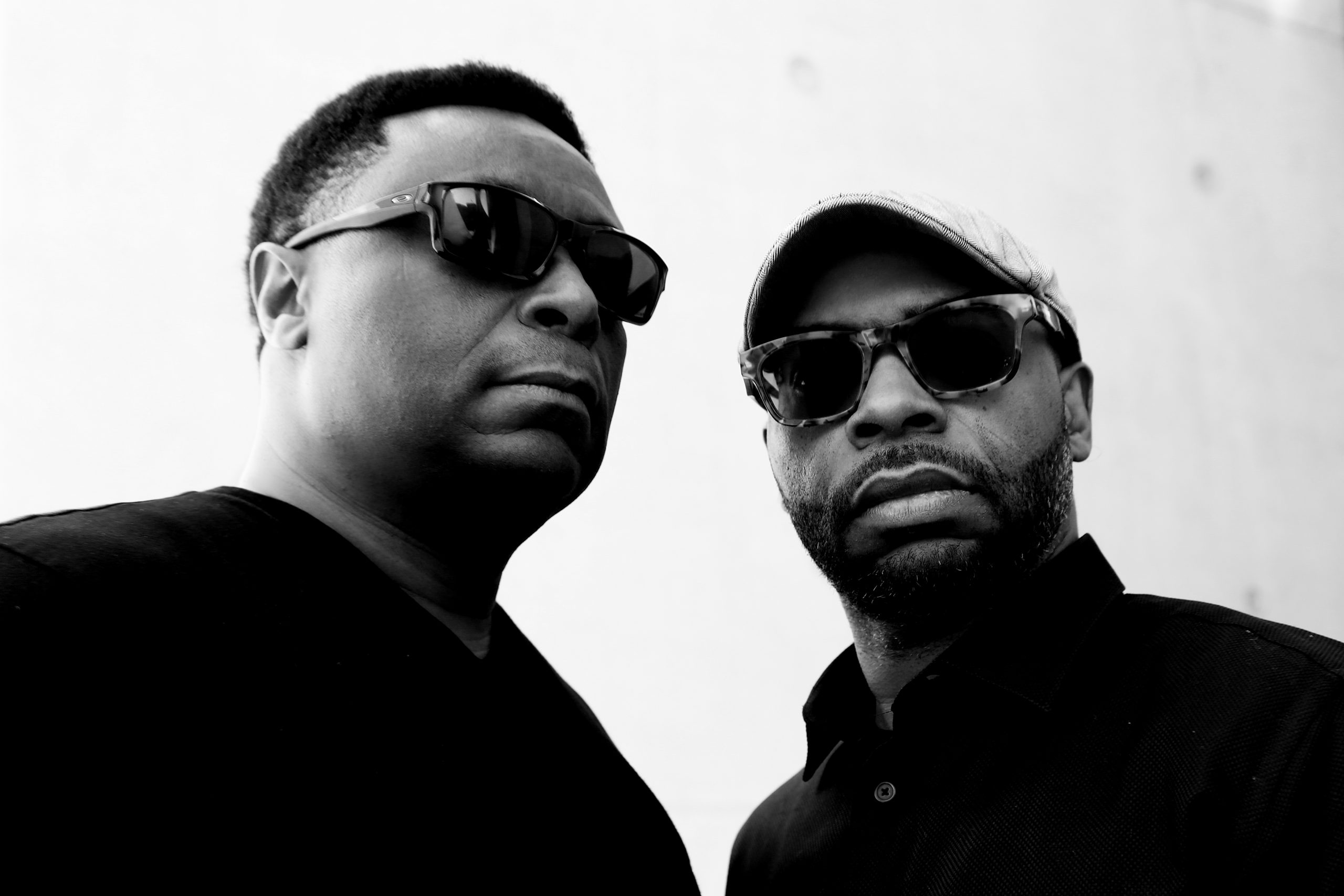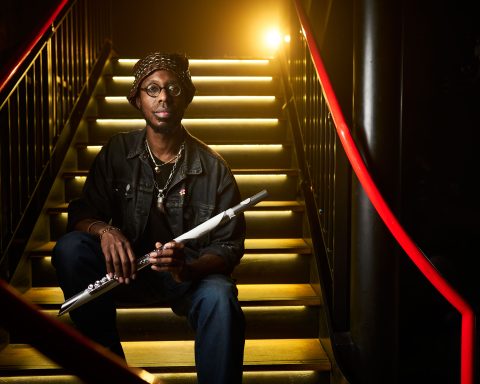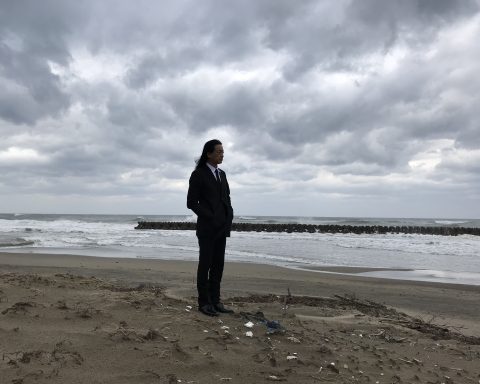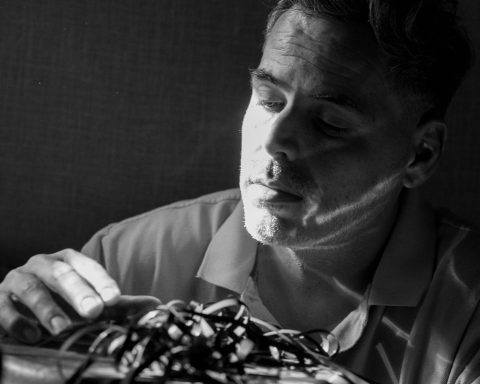Brothers Lenny and Lawrence Burden have been vanguards of the Detroit techno scene for over 30 years under aliases like Octave One, Random Noise Generation, and their latest incarnation, Never on Sunday. Infatuated by gear, the duo’s live setup epitomizes techno’s core principle of merging human and machine, creating the “Mothership” as a vessel for their hands-on, heavily sequenced sound. Lenny Burden is the brainchild behind the band’s on-stage collection of groove-ridden technologies, with Roland gear frequently designated to test the boundaries of playing live in real-time. Meanwhile, his brother Lawrence works as the mixer, bouncing off Lenny’s lead with almost telepathic intuition.
Sonic Siblings
The initial idea was to first play live as Random Noise Generation as a solo artist. How and when did Lawrence get involved in forging your on-stage partnership?
It happened quite quickly. We put together a US tour for other acts on our label, and the main act couldn’t make it. So I ended up filling the spot. I was very ambitious when I put that show together. I had a mixing console, sampling gear, and drum machines, and I ran visuals from a laptop.
Lawrence was scheduled to DJ right before I started playing the first show, so I started my intro and tried to do video. Lawrence said, “You’re not getting this together fast enough,” and jumped in front of the mixer. Since then, Lawrence has been my live partner.
Hardware Ethos
What’s the principal reason for having a hardware-only setup?
Hardware is what was available when we first started playing live—laptops were not. The one time we tried to play with a laptop, I found so much information in front of me that I was constantly looking at the screen and not paying attention to what was happening in the room. Hardware is really where our comfort zone is.
Do you write specifically with an eye on live performance?
At first, we never really thought about the dancer. We thought about the DJ that would use our records, and we became known for making really good DJ food. As we progressed and became much more musical, we started making tracks that would work within our live set. Over the last ten years, the initial ideas for a lot of our music have come from those sets.
“I like things that are set up for performance because that’s how we work in the studio, where we like to play everything.”
Live Immediacy
Are you using a sequencer to control the entire setup?
The MPC Live is the brain, and we use two of those units. Lawrence’s job is usually in front of the mixing console. Because we don’t use stems or pre-mixed groups, we need 12 outputs so he can access individual sounds. We also need two units because the CPU can’t keep up with everything we’re pushing out. It starts to overload after about 30 minutes, so it’s not practical to stop the show and clear the memory.
Does your focus on machines give you more immediacy?
I like things that are set up for performance because that’s how we work in the studio, where we like to play everything. For example, I really like the Roland TR-8S because it’s a throwback to old drum machines like the TR-909. Everything’s right in your face, and you can do your menu diving prior to hitting the stage. I used to put stickers on it to remember how to do step looping for the drum rolls, but newer units in the Roland line have added a step loop button.
“I really like the Roland TR-8S because it’s a throwback to old drum machines like the TR-909. Everything’s right in your face, and you can do your menu diving prior to hitting the stage.”
Gear Talk
What are you using for drums?
I do a lot of drum fills and additional drums on a Roland TR-8S, which has a custom kit based around the actual 909 and features a signature Octave One kick drum that I’ve added to the unit. I also use the Arturia BeatStep Pro for holding drum patterns. The cool thing about using these sub-sequencers is that they’re great for transitioning between songs. If I want to play a particular line or melody, I can sequence it up or add additional toms, rides, and snares with the Roland TR-8S. Once I start a new song with the sampler, these elements can continue into the next song, which adds a sense of familiarity.
Is there a point at which the continual addition of gear reaches a threshold that’s too unpredictable?
I’m a gear nerd, so sometimes things can get too complex, and I have to strip them down. At the moment, I’m only dealing with five synths that I can program live, which is a lot. But I’ve used up to ten in the past. The problem with using too much gear is that when something goes wrong, you look at many things that could be the cause. I’ve learned to understand all the triggers and how to troubleshoot fast. Knowing in my head exactly how everything is laid out gives me a lot of confidence.
“We’re at the edge of our seats for the entire set because Lawrence has no idea what I’m going to play.”

Advice and Experimentation
Can you give advice on what gear to use live, or is a lot of that down to how a track originated?
I recommend people experiment with different tools for their live setup, even if they might not be the same ones they’ve used in the studio. Weight is also a factor for everyone who carries equipment rather than just using controllers and a laptop.
Roland started making a lot of Boutique versions of their gear. If you can’t bring a JUNO-106, you can throw something into your backpack that can primarily make the same sounds. We have tons of old Roland gear in the studio, but we probably have eight or nine different Boutique units that we can switch out for our live show. These instruments can be very practical and a lot of fun to use live.







